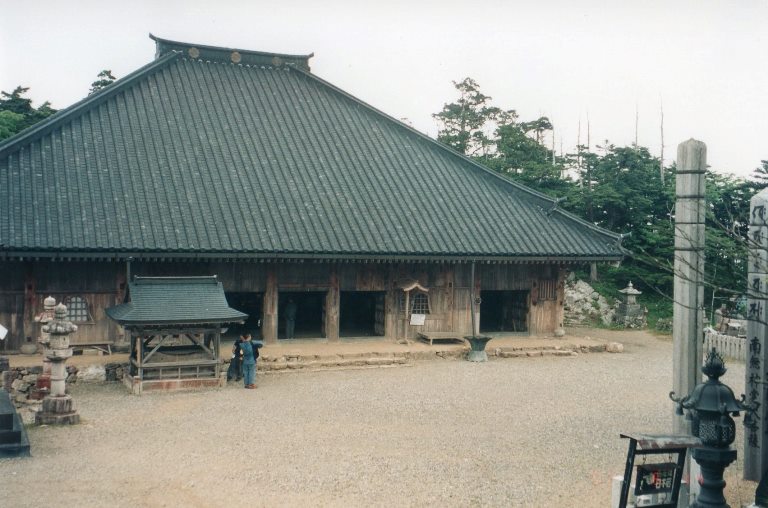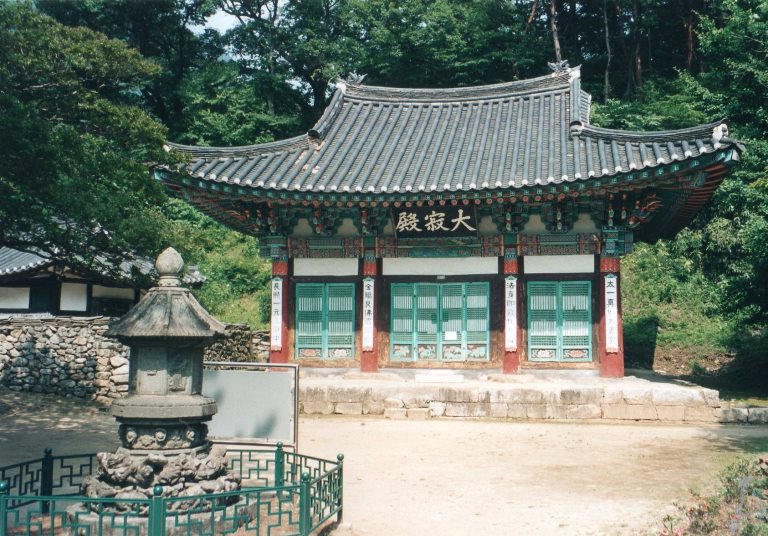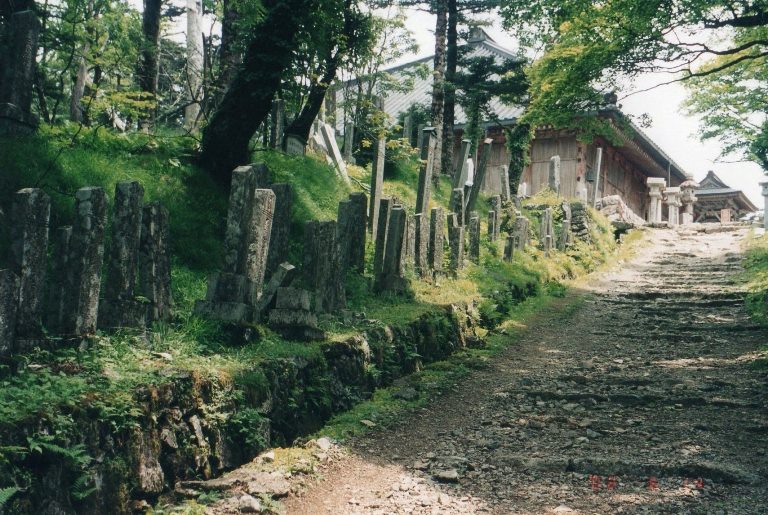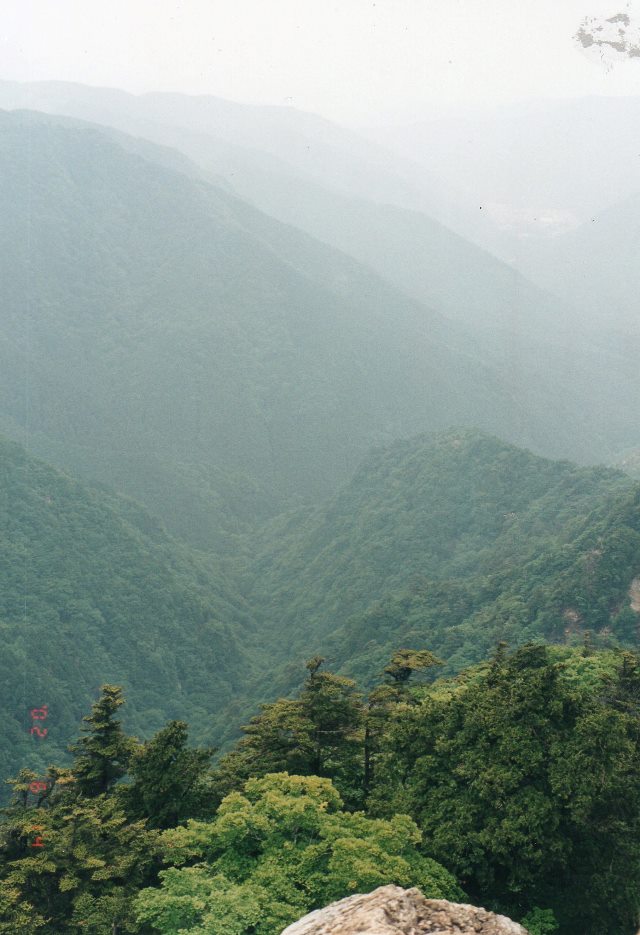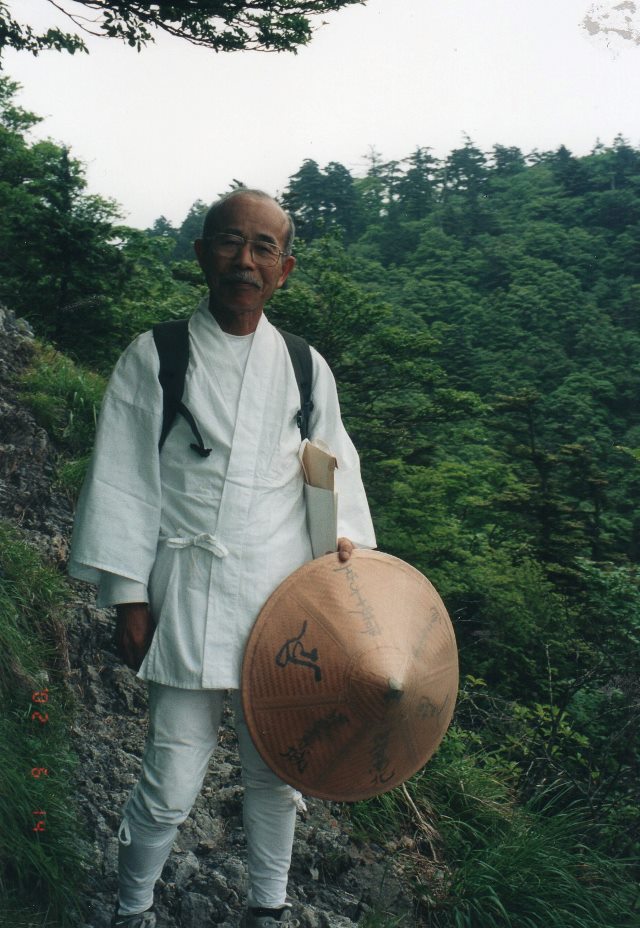Kumano Kodo
Key information: Kumano Kodo 
- A network of old pilgrimage routes to the Kumano Sanzan or Three Grand Shrines of Kumano, the spiritual heart of Japan.
- As well as the ancient Kii-ji route down along the west coast and then inland on the Nakahechi Route or on round the coast, there were other ways which crossed the rugged and remote mountains of the interior, including the Omine-michi Route between lovely Yoshino and Kumano, via the central mountainous Omine-san area, the Kohechi Route ] from Koyasan.
- Fine forested landscape littered with evidence of an ancient, rich and indeed unique spiritual history. Stay in remote villages, steam in hot baths, and eat like a god.
- This can be tiring walking in a frequently wet area. Come prepared.
Walkopedia rating
- Walkopedia rating90
- Beauty30
- Natural interest13
- Human interest18
- Charisma31
- Negative points2
- Total rating90
- Note: Negs: crowding at popular sites
Vital Statistics
- Length: Variable
- Maximum Altitude: 1719m
- Level of Difficulty: Strenuous
WALK SUMMARY
The Kumano Kodo is a network of old pilgrimage routes on the Kii Peninsula, south of Kyoto and Osaka on Japan's largest island, Honshu, which lead to the Kumano Sanzan, the Three Grand Shrines of Kumano, an area which, along with Koyasan to the north and Ise to the north-east, constitute the spiritual heart of Japan. They are associated with the introduction of Buddhism to Japan and centuries of pilgrimage by all levels of society, from emperors to merchants to peasants.
The Hongu Taisha is the northernmost of the three great Kumano shrines, a harmonious group of buildings dedicated to a god of mountains and trees which is beautiful and perfect in its rich plainness. It stood for over 1,000 years on an island in the Kumano river valley until it was destroyed by flood in the late 1800s and was subsequently rebuilt up the hillside. The base of the old shrine still sits quietly in its trees, by the largest torii gate in the world. Nachi Taisha lies south-east of Hongu, a shrine and busy complex on a steep slope near a spectacular 133m waterfall, the highest in Japan. The Hayatama Shrine at Shingu on the coast north-east of Nachi (and around 35km down river from Hongu) is sacred to a Shinto god of healing.
The huge complex of mainly Buddhist temples and other buildings at Koyasan in the mountains to the north of the peninsula sits in a lovely basin said, with its eight surrounding peaks, to resemble a lotus flower. As well as the beautiful and famous buildings which make it one of the most important Buddhist centres in Japan, there is a vast, ancient graveyard which contains the ashes of more than 200,000 notables, from shoguns to corporate citizens in a collective Sony monument.
The great Shinto site at Ise contains 125 shrines and is steeped in atmosphere. It is Japan?s most important Shinto shrine, focused on the sun goddess, who is said to be the source of the Japanese imperial line, and it is accordingly the site of important ceremonies.
It is not just these great sites that were sacred, though: Kumano is a spiritual realm as well as a physical area. The routes are littered with oji (subsidiary shrines), statues, the remains of tea houses and other reminders of the routes' rich past.
History
The spirit-worship and reverence for nature and ancestors of Shinto emerged with the dawn of the Japanese people. Buddhism was first introduced to Japan in the sixth century AD. It remained a preserve of the elite for many years, but was gradually popularized, particularly after Kobo Daishi (Kukai), founder of the great complex at Koyasan, introduced what became the Shingon sect of Buddhism.
Reverence of the mountains was an important aspect of Shinto and, over the centuries, a tradition of mountain asceticism also developed, particularly the elusive Shugendo school promulgated by the semi-legendary En-no-gyoja in the late 600s, which elided elements of Shinto and shamanism with an ascetic form of Buddhism . The mountains around Kumano, especially north toward Omine-san, became special haunts of its adherents.
Over the centuries, Buddhism and Shinto did more than merely live comfortably side by side, they became closely intertwined. While Koyasan is distinctly Buddhist, the Kumano Sanzan show a remarkable level of sycretization, with Buddhist and Shinto features in the same temple.
Followers of all these faiths and schools come to Kumano, which has also always been open to women, unusually among sacred sites in Japan.
The first major pilgrimage to Kumano was made in 907AD, when the retired emperor Uda made the long and arduous journey. Many retired emperors and aristocrats followed, often coming here many times. The pilgrimage gained huge popularity with all levels of society, to the extent that is thought that, by the C13, 30,000 people a year made the journey: they were said to look like ants.
These mountains must have been impenetrable before proper trails were cut, with their flanks steep to the point of sheer and the native forest thick and tangled. A pilgrimage took 30 or more days, and was arduous - we passed memorials to pilgrims who had succumbed to its rigours - and risky, with bandits and even a teahouse where pilgrims were said to be woken artificially early so they could be thrown off a nearby cliff before there were witnesses on the trail.
The pilgrimage and the routes
As well as pilgrimages to particular sites, these were symbolic journeys through a sacred landscape. The pilgrim moved from the diamond realm of clear Buddha thought in the north to the womb realm of death and rebirth on Mt Myoho near Nachi, with purifications and other rituals on the way.
The pilgrims had many purposes, some venal; but most sought, on this journey into the spiritual realm, to gain greater understanding, even enlightenment, and travel, with purifications and physical suffering, toward the world of the divine and a symbolic death and hoped-for rebirth. Later on, people sent monks to Kumano in their place to seek their salvation.
The ancient Kii-ji routes, down along and inland from the west coast from the old capital at Kyoto, consisted of several alternatives: follow the coast and then turn inland at Tanabe to cross the interior mountains on the Nakahechi Route, the most-used ancient trail, to the great shrine at Hongu Taisha in the heart of the peninsula, and then head for the other two great shrines nearer the south-east coast; or continue from Tanabe on round the coast on the Ohechi Route to the coastal shrines; or go first to the great Buddhist temples at Koyasan in the north and then cross the rugged interior on the shorter but tougher Kohechi Route.There were other ways which crossed the rugged and remote mountains of the interior, including the Omine Okugake-michi Route between lovely Yoshino and Hongu, via the central mountainous Omine-san area. There was also the easier and later-developed Iseji Route down the east coast.
Various of these routes and sites are now a World Heritage Site: "the Sacred sites and Pilgrimage Routes in the Kii Mountain Range". The Kumano Kodo is (as of 2015), along with the Camino de Santiago, the only pilgrimage route that has this status.
This is fine walking on numinous routes which are often lined with oji, torii gates, stele inscribed with poems, all evidence of the area's, and indeed Japan?s, ancient, rich and indeed unique spiritual history. "Cultural landscape" indeed.
Most of your time will be in attractive, rugged forested landscape, although much of it is blanketed in planted conifers, which makes for limited variety and in the thicker areas almost a monoculture... but, most of the time, there are shrubs or low bamboo or ferns below, and in dappled sunlight or drifting mist it is very pretty. Every so often you pass into natural woodland of mixed trees and shrubs which make a welcome change.
A fascination of walking here is the view you get of rural Japan; rich remains of a tough but unique way of life are everywhere, even if the population is shrinking and rice terraces returning to forest. You will stay in remote villages and eat like gods morning and evening.
The Nakahechi Route: Most modern walkers follow the Nakahechi trail from Takijiri-oji, the beginning of the "Passage into the precincts of the sacred mountains" for three days to Hongu Taisha, then continue on across two more days' worth of rough hills to Nachi Taisha, which is nowadays the most walked stretch (but often done in reverse). You can also travel by boat from Hongu Taisha to Shingu, following in the wake of the emperors (They used to do this then move on the Nachi then walk back over the hills to Hongu) . Hardier folk may take the Kohechi trail. See William Mackesy's account of walking the Nakahechi.
The Kohechi Route linked the Koya-san sacred area and the Kumano area. It survives now as a gorgeous 70m walk through remote, forested mountains. It is a tough walk against the grain of the land, involving a lot of climbing and steep descents on moss-slippery steps and roots, crossing three peaks over 1,000m high.
At the heart of the Kii peninsula lies Omine-san, a mountain of limestone precipices topped with virgin forest in which nestle temples, shrines and lodging-houses. This very rugged area has long been the retreat of ascetics and hermits. It became an important centre of pilgrimage and retreat for the idiosyncratic Shugendo school. The sect's practitioners, yamabushi (mountain priests), dressed in white from their flat wide brimmed hats to their shoes, still labour up the mountain, mainly as pilgrims now rather than residents. Although Shugendo was suppressed in favour of Shinto during the Meiji period, it still has a surprising number of adherents. This remains a rugged landscape of remote valleys and a nearly impassable series of high, sheer, interlocking ridges. It remains mysterious and off the beaten track, even to the Japanese.
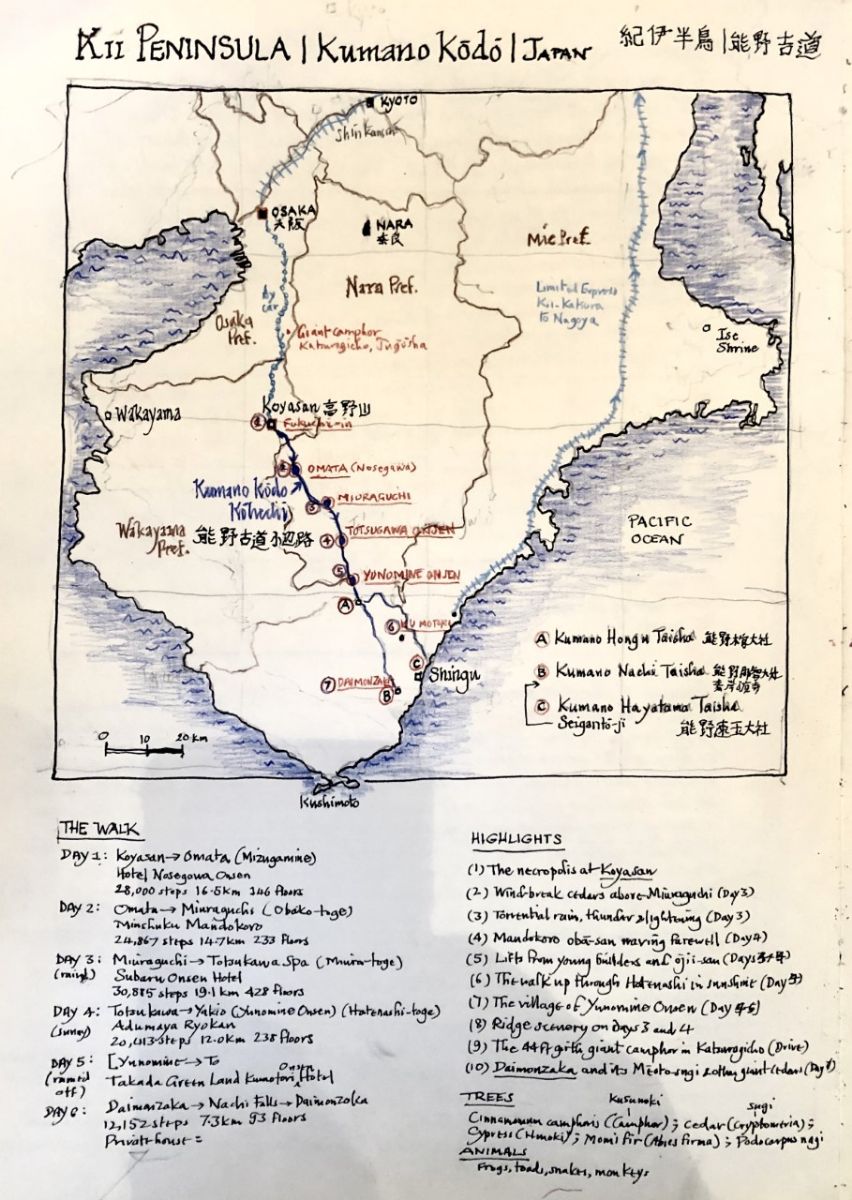
Thanks to Stephen Barber for the lovely map!
Other accounts: share your experiences
Your comments on this walk, your experiences and suggestions, and your photos are very welcome. Where appropriate, you will be credited for your contribution.
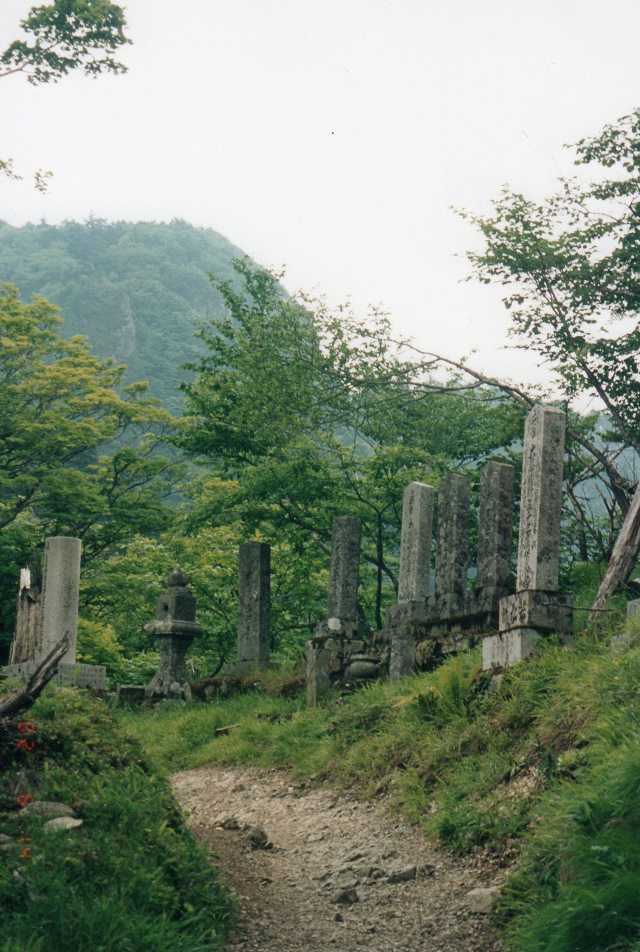
We have a lot of helpful practical information and tips about this walk, covering everything from the best books and maps, to timing and weather, geting there, possible problems, whether you need a guide and where to find them, and useful websites. This section is only open to members.
Membership is FREE AND JOINING TAKES 30 SECONDS. To login or sign up click here
Safety and problems: All walks have inherent risks and potential problems, and many of the walks featured on this website involve significant risks, dangers and problems. Problems of any sort can arise on any walk. This website does not purport to identify any (or all) actual or potential risks, dangers and problems that may relate to any particular walk.
Any person who is considering undertaking this walk should do careful research and make their own assessment of the risks, dangers and possible problems involved. They should also go to “Important information” for further important information.
Anyone planning an expedition to this place should see further important information about this walk.
Safety and problems: All walks have inherent risks and potential problems, and many of the walks featured on this website involve significant risks, dangers and problems. Problems of any sort can arise on any walk. This website does not purport to identify any (or all) actual or potential risks, dangers and problems that may relate to any particular walk.
Any person who is considering undertaking this walk should do careful research and make their own assessment of the risks, dangers and possible problems involved. They should also go to “Important information” for further important information.
COMMUNITY COMMENTS AND PHOTOS
Name: RichardZen
Posted on: 31/05/2015
Kumano Kodo is a large pilgrimage walk but I had little time so I took the train and bus to Nachi. The highlight of Kumano Kodo is the Nachi Taisha which is a Shinto and Buddhist shrine situated in the same location. I felt that it being rainy and humid was perfect for foggy photos of the area. I started walking at the train station but this was dangerous with sharp shoulders on the road. It's best to take a bus to the start of the trail. It starts with a quaint bridge and then the Daimon-zaka staircase. It was difficult to get pictures without people in front as this is a popular area. The best time to go is during a weekday and in the morning. When finally reaching the shrine it was rainy but beautiful nonetheless. One can continue past the Shinto shrine to the Buddhist temple and then down some stairs to the Seigantoji temple with the Nachi No Taki waterfall in the background. With the fog it was magical. To get further towards the waterfall one has to go down some treacherous rock steps to a small bamboo grove and a Zen temple at the bottom. For those who don't know, the Shinto Torii gate is a symbol of leaving the profane into purity. Since death is considered impure then Buddhism was needed to deal with the inevitability of death. Hence there's a symbiotic relationship between the two religions.
Name: Xtinemd
Posted on: 27/03/2017
A wonderful way to experience one of the UNESCO world heritage sites of Japan by walking the Kumano Kodo. I have walked the Camino from Sarria to the city Santiago and immersing in the culture , in Galician nature and gastronomy was amazing. Walking the Kumano Kodo and having done the Camino makes one a dual pilgrim as both walks are UNESCO Heritage sites . The Kumano had its own character and beauty of nature , interesting folklore , wonderful people , hospitality that makes the walk more meaningful and inspiring despite some challenges along difficult routes
Name: Paul
Posted on: 02/01/2020
I walked the Kumano Kodo from March 26th to March 30th, 2019, from Kudoyama railway station to Nachisan waterfall and temples. It's a 120 km strenuous walk I decided to cover in 5 days instead of 7, because accomodation was not possible in Muira Guchi and Koguchi (fully booked and a bit early in the season, all Minshukus were not open). Two hard days of 30+ km starting at 6 am, 11 hours walk but feasible (I'm 52 and not an athlete) : Omata to Totsukawa and Hongu to Nachisan. It's a beautiful and very nice walk. Come prepare to enjoy the tranquility of this remote forest filled with spiritual atmosphere. I walked alone and met a very few people. Minshukus were nice with family atmospere and lovely people to meet. Definitively one of the nicest walk I've made. Paul
OTHER ACCOUNTS
share your experiences
Add your experiences, suggestions and photos. We would be delighted to receive your writing and ideas (which will be attributed appropriately where published).
Anyone planning an expedition to this place should see further important information about this walk.
Responsible travel matters, a lot. How you travel will make a real difference - for better or worse. PLEASE consider this when making plans. Read more



